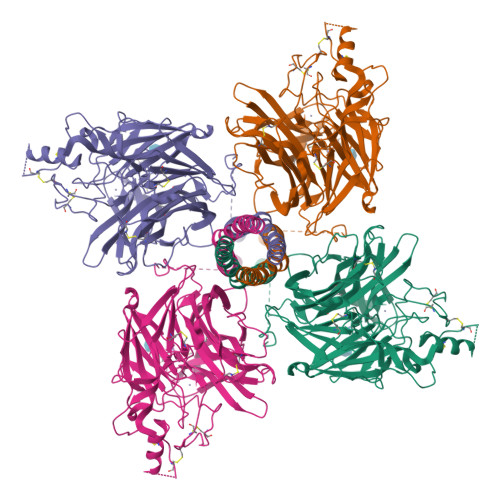Structure and design of Langya virus glycoprotein antigens.
Wang, Z., McCallum, M., Yan, L., Gibson, C.A., Sharkey, W., Park, Y.J., Dang, H.V., Amaya, M., Person, A., Broder, C.C., Veesler, D.(2024) Proc Natl Acad Sci U S A 121: e2314990121-e2314990121
- PubMed: 38593070
- DOI: https://doi.org/10.1073/pnas.2314990121
- Primary Citation of Related Structures:
8TVB, 8TVE, 8TVF, 8TVG, 8TVH, 8TVI, 8VWP - PubMed Abstract:
Langya virus (LayV) is a recently discovered henipavirus (HNV), isolated from febrile patients in China. HNV entry into host cells is mediated by the attachment (G) and fusion (F) glycoproteins which are the main targets of neutralizing antibodies. We show here that the LayV F and G glycoproteins promote membrane fusion with human, mouse, and hamster target cells using a different, yet unknown, receptor than Nipah virus (NiV) and Hendra virus (HeV) and that NiV- and HeV-elicited monoclonal and polyclonal antibodies do not cross-react with LayV F and G. We determined cryoelectron microscopy structures of LayV F, in the prefusion and postfusion states, and of LayV G, revealing their conformational landscape and distinct antigenicity relative to NiV and HeV. We computationally designed stabilized LayV G constructs and demonstrate the generalizability of an HNV F prefusion-stabilization strategy. Our data will support the development of vaccines and therapeutics against LayV and closely related HNVs.
Organizational Affiliation:
Department of Biochemistry, University of Washington, Seattle, WA 98195.




















